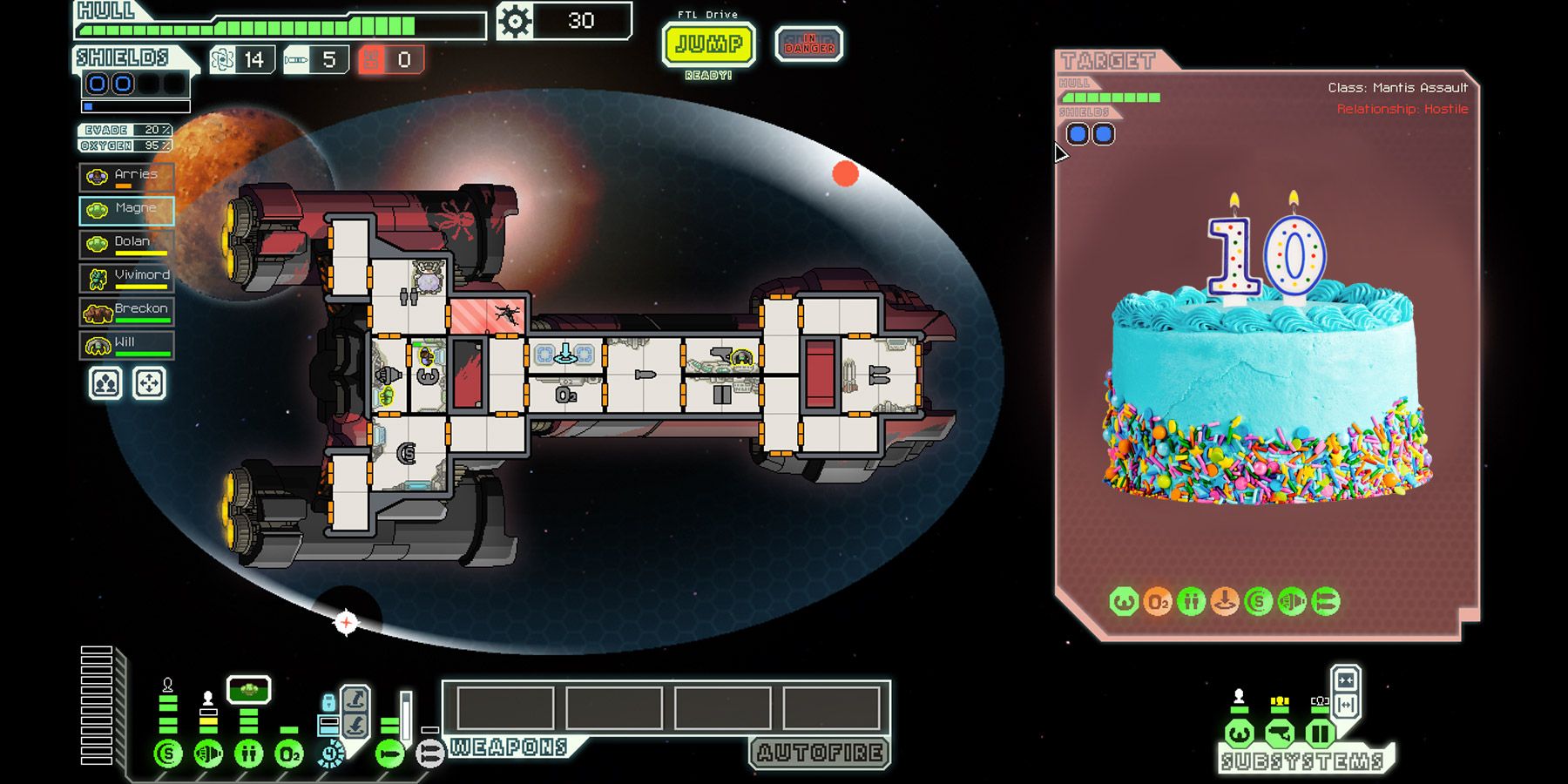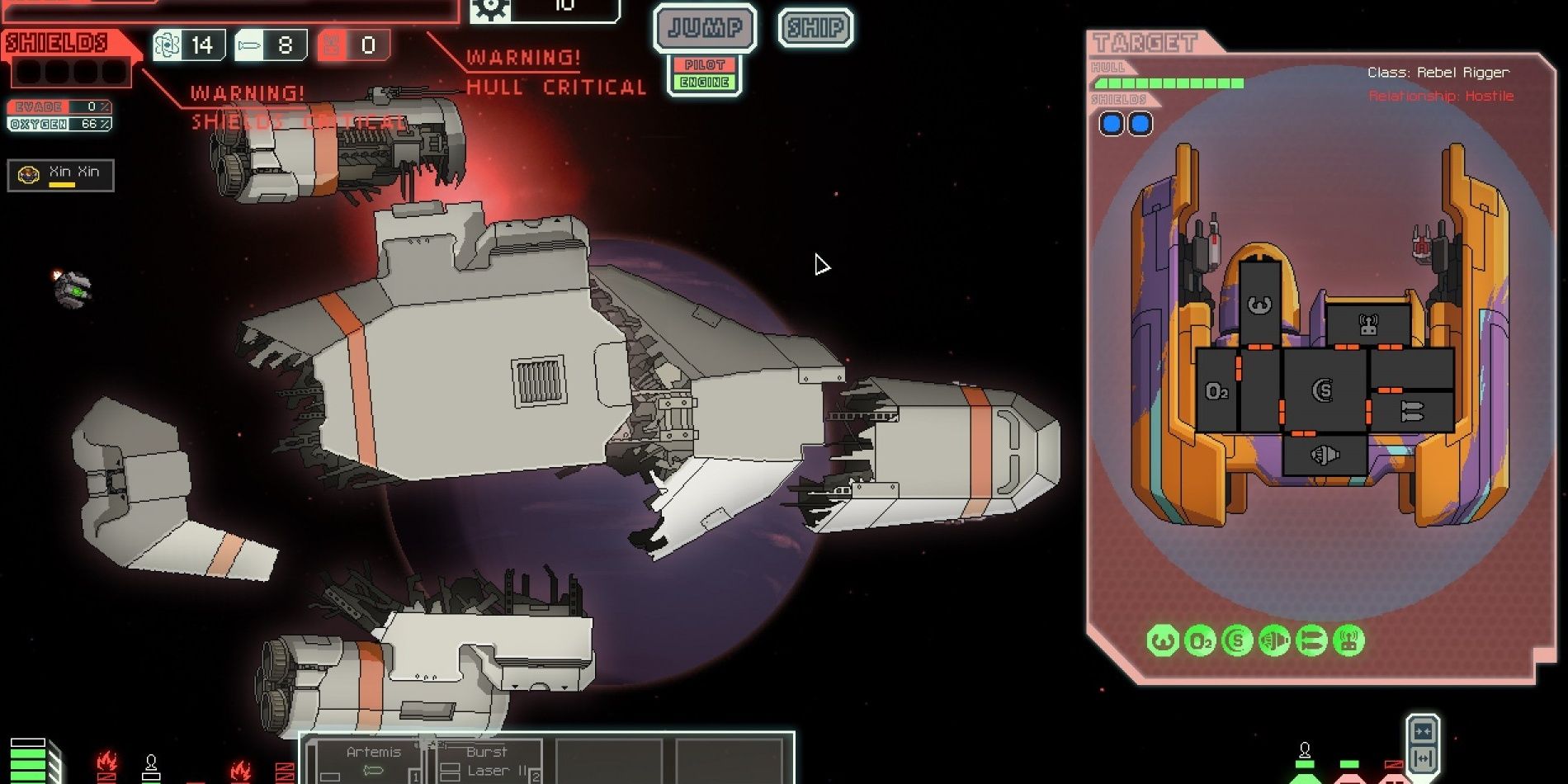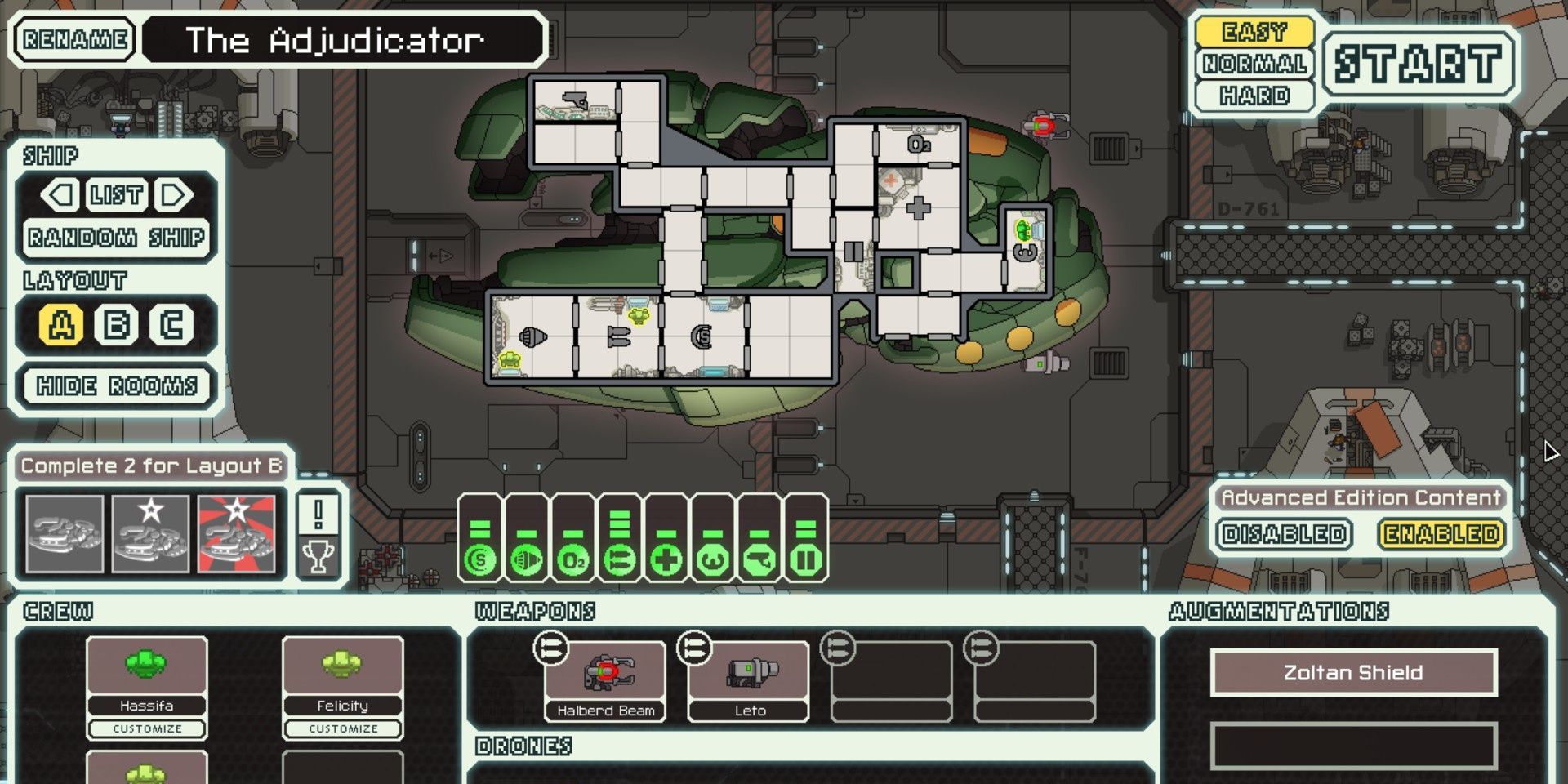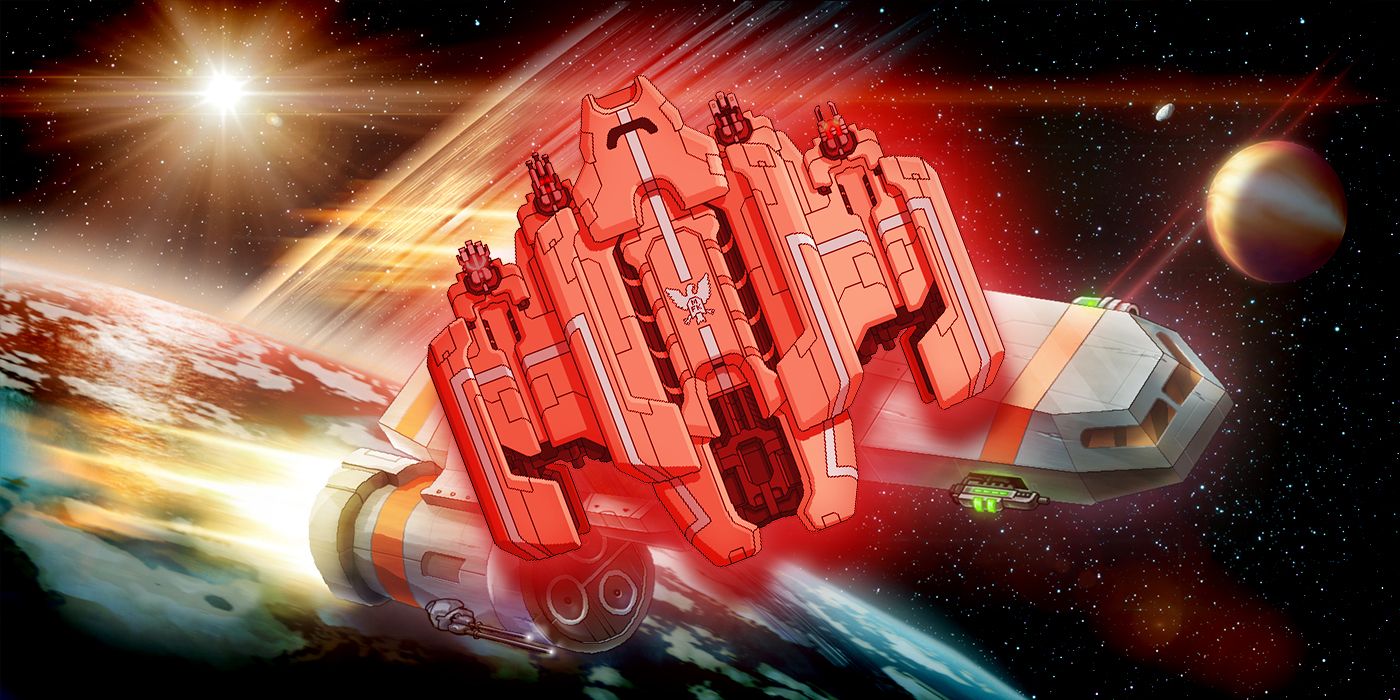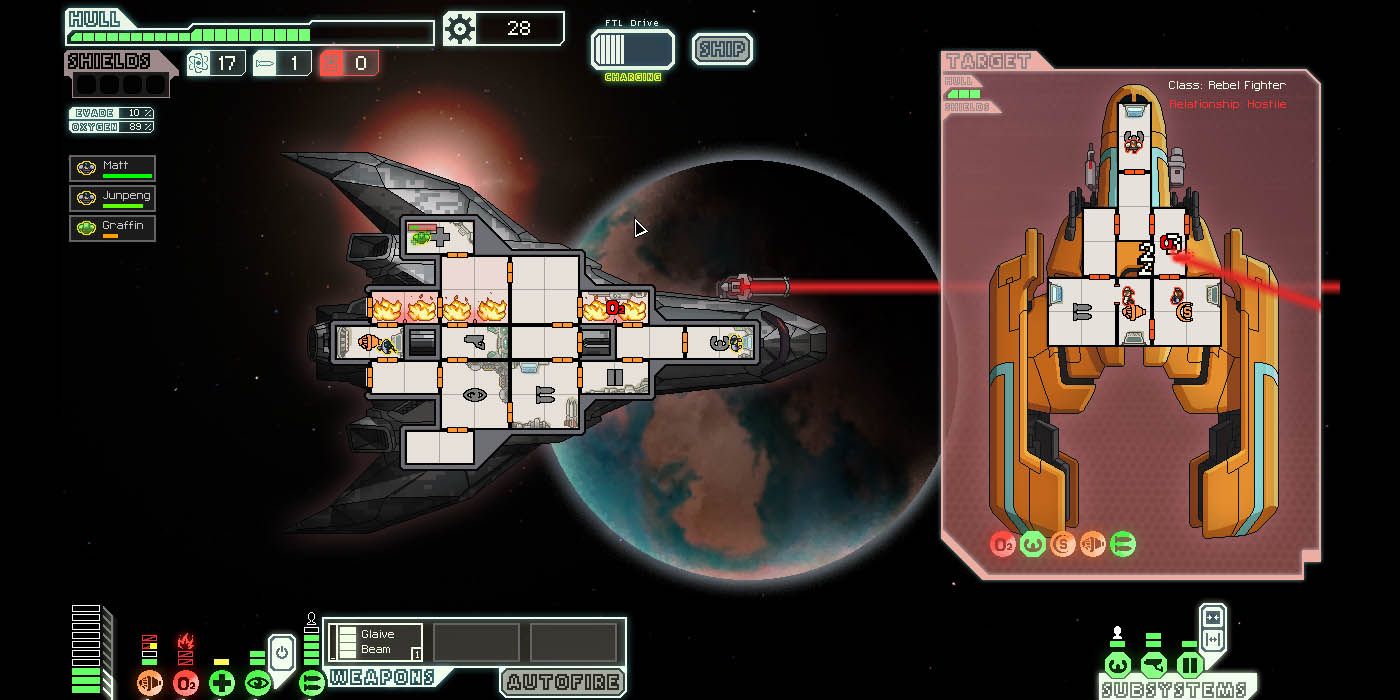Much of Star Trek has centered the idea of "boldly going" since its inception in 1966, presenting audiences an image of humanity removed from modern failings. Yet the original USS Enterprise was essentially a military submarine under the cavalier Captain Kirk. It's no surprise that many interesting concepts from the franchise question how a united people would face incomprehensible threats to their life and morality, like the Borg in The Next Generation and Dominion War in Deep Space Nine. Ten years ago, Subset Games released FTL: Faster Than Light, which still stands out for the way it puts these quandaries in players' hands.
The Galactic Federation in FTL is less fleshed out than Star Trek's United Federation of Planets, but maintains the same core appeal. It is an intergalactic peacekeeping organization that has members from a variety of alien races, all serving on the same starships to provide their unique skills. One major difference is that FTL's worldbuilding isn't predicated on utopian ideals, it's more similar to the gritty Star Wars universe - the main plot even rests upon players delivering intelligence that can help defeat the Rebel Flagship, a stand-in for the Death Star, before it destroys the main Federation Base.
This basic good versus evil narrative grafts so well into the morally gray politics of a Star Trek-styled alliance because FTL's roguelike design puts an emphasis on how the player conducts themselves over the course of each randomly generated run. Victory against the Rebel Flagship requires a lot of power, especially on higher difficulties, but how the player acquires this power depends on the way they believe their crew would react to unexpected circumstances. Subset Games gives players the chance to build a true coalition that reciprocates help or a death machine that takes components from friends and foes alike, and the freedom within its relatively limited framework is still compelling to this day.
Creating FTL and Intergalactic Warfare
Justin Ma and Matthew Davis are the two people responsible for Subset Games, having raised over $200,000 to create FTL through a Kickstarter in February 2012. That crowdfunding campaign quoted outside sources describing FTL as "Firefly by way of Spelunky," narrowing down the kind of space opera plotting in franchises like Star Wars by focusing on the inner-workings of a single ship.
Every FTL run begins by selecting one of a handful of ships, each equipped to take advantage of the game's potential build diversity. For example, the basic Engi ship has built-in drone controls befitting that race of emotionless, mechanical beings; meanwhile the basic Mantis ship has a Teleporter to take advantage of boarding enemy vessels with fast, hard-hitting insectoids. Yet these ship systems can be adjusted on the fly if players find upgrades along their journey, befitting the customization inherent to naming one's ship and editing crew members as desired for roleplaying.
Freedom of choice goes deeper considering players not only allocate resources to upgrading their ship, but also decide how every system operates during real-time combat. A player's vessel will never be prepared for every encounter given the breadth of combative options, but even underpowered ships can survive with the kind of clever direction one might see in a Star Trek episode. Everything can be adjusted by hand, from pulling power out of generating oxygen to juice up shields to opening every door so the vacuum of space snuffs out fires. Crew members become better at operating certain stations over time, but anyone can be ordered to do repairs or combat invaders in any section of the ship - provided there's room.
In an August 2012 interview with Rock Paper Shotgun, Ma and Davis said they wanted to capture the high-stakes combat and command from Deep Space Nine in the style of a top-down board game, and FTL certainly exemplifies what made that series popular in microcosm better than officially licensed titles like Crossroads of Time. It was so successful that the FTL: Advanced Edition expansion released in 2014, adding a new alien race, more ships (including new variants of older vessels), and much more.
Choice Drives All of FTL's Systems
Combat in FTL is a compelling chess game of moving units and targeting enemy systems to perfectly incapacitate them, but a lot of what's possible in battle rests upon the player's exploratory nature and ability to read ongoing situations. Players have to pass through seven sectors to reach The Last Stand against a Rebel Flagship, set across branching pathways that can take the crew to civilian space, hostile environments, or nebulas that obscure one's surroundings.
Each sector is a spider web of beacons that the player's ship can jump to (within certain parameters unless certain augmentations are equipped) before the enemy fleet catches up, and this is where the game's roguelike nature shines. Any beacon could lead to a battle, shop, or a random event that typically offers a choice - pulling from inspirations like Fallout and Mass Effect. Sometimes good or bad things happen outside the player's control, but other times they may come across a problem to solve.
One example is the "crushed pirate" event, in which a vessel with pirate markings is found trapped between two large rocks after illegally mining in an asteroid belt. Players can try to dislodge the ship with a laser at risk of destroying it (and taking damage), or they can intentionally destroy the ship for zero tolerance of pirates. However, should they come equipped with a beam-based weapon, players can merely cut the ship free for a reward with no risk. Collecting different equipment and crew members is essential, as players never know when they'll need an Engi to distribute vaccines on a contagious planet or a Rockman to wade through a fire.
All of these elements and more unique ones introduced by Advanced Edition content, with writing assistance by Tom Jubert and Chris Avellone (who has since been accused of sexual misconduct), mesh with combat that requires split-second decision to really capture what it would be like if a Star Trek crew encountered threats around every corner during a season of television. Subset Games would go on to examine the tropes of Kaiju films and time-loop stories like Edge of Tomorrow in its subsequent release Into the Breach, but there's still plenty of reason to revisit FTL's unique place in the canon of sci-fi games after 10 years.
FTL: Faster Than Light is available now on Mobile and PC.

